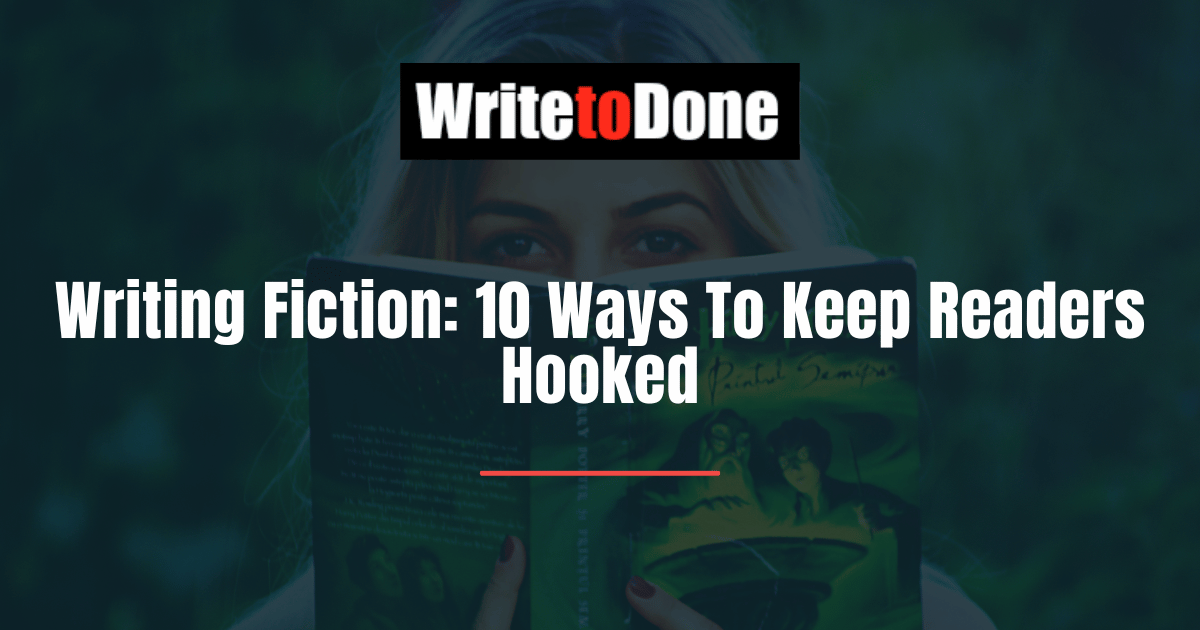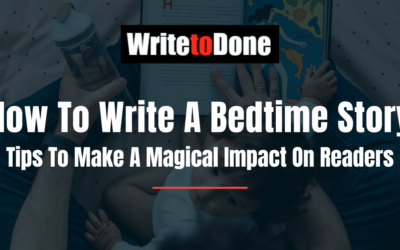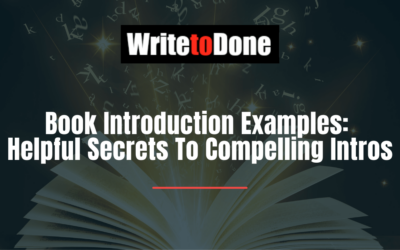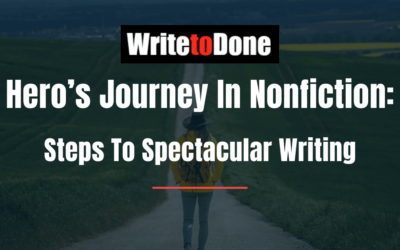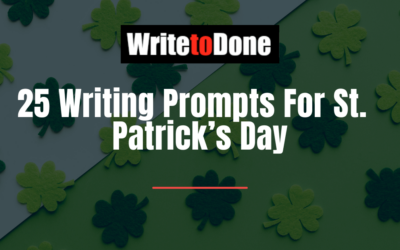How can you entice your reader to turn the page?
By writing a good story, of course!
The drama within the tale—plus the implied question ‘how will it all turn out?’—should be motivation enough.
But it isn’t.
Even great stories must be structured to sustain that drama.
‘Scene hangers’ are one way to do it. They’re lines set at the end of a scene or chapter that tempt the reader to read on. Most great stories contain scene hangers, though they might not be obvious.
The device became popular in the mid-19th century when many novels were sold in monthly instalments and readers had to be teased, at the end of each instalment, to buy the next one.
But scene hangers are used even today, in virtually every genre.
Here are 10 proven ways to writing fiction that will keep your reader hooked:
#1. Break at a point of tension
”I’ve had enough of this marriage,” Jane screamed, “and of you!”
The reader yearns to know how, or if, the tension will be resolved in the next chapter.
The tactic here is to delay the resolution of a scene.
“I just don’t understand,” Jim said to the hushed room. And the silence deepened.
Keep the big questions hanging.
You can emphasize the break by setting the scene hanger on a separate line.
This was a time for rejoicing./Wasn’t it?
If you end a scene with a single sentence or phrase (‘Wasn’t it?’) on a line by itself, it acquires a special emphasis: teasing or ominous. Almost any phrase will do.
Or you can end the scene with a pregnant pause.
He set his glass carefully on the table and fixed me with a glance that would have skewered a pig.
What does this mean? We have to read on to find out.
Why not put a ‘gun on the wall?’
On his wall I noticed a hand gun. While his back was turned, I sniffed it. Recently fired.
End your scene or chapter with some mysterious object. It need not be a gun as such.
On his table was a model, four foot high, of the Mt Rushmore Memorial. Built of bread dough.
Bread dough? Why?
It could even be an odd event.
For no obvious reason, he smiled then stood on his head.
What’s going on? We jump to the next chapter to find out.
Each of these examples closes on a note of uncertainty. You can create uncertainty with a single phrase.
- At least, that’s what it seemed.
- But maybe I was wrong.
- Or so I thought.
Joe would go to college and Sharon would have her baby and everything would be fine. Or so I thought.
That lingering hint of doubt builds suspense. And suspense keeps a story moving.
#2. Ask a rhetorical question
How ever would I get out of this mess?
Shakespeare pioneered the trick in King Lear: “What will hap more to-night?”
Today, a question addressed blatantly to the reader sounds old-fashioned. Reserve it for pulp fiction.
However, the device can be used in subtle ways. Simply end with a question that the narrator poses to themselves:
Was I right about Jill’s pregnancy? For sure, I would know tomorrow.
So will the reader, if they read on.
#3. Link the passages with a forecast
Houston would be unbearably hot in August, I thought./And so it was.
With one jump, we’re in Houston.
You can strengthen that forecast with a linking word or phrase.
Park Avenue at night is a joyless place./I arrived at my apartment, but with no great joy.
The terms ‘joyless’ and ‘joy’ link the chapters seamlessly to give a sense of continuity.
A forecast can build suspense if it foreshadows a fateful event.
I thought the worst was over, but it wasn’t.
What more disasters await the narrator overleaf, we wonder?
You could even make a happy prediction.
Tomorrow was going to be the best day of my life!
The reader knows—just from the naivety of the statement—that tomorrow is not going to be happy. In either case, they turn the page with dreadful joy.
Or you could foreshadow an intriguing incident.
Somewhere in the darkness a child wailed.
Why did it wail? The incident doesn’t have to be important. You can drop it in to add a hint of mood or mystery, and perhaps not even refer to it again. But the reader turns the page to learn more.
#4. Drop in a deceptively casual remark
Of course, the man was a fool.
The very casualness of the remark cues the reader to disbelieve it. Clearly, the man is not a fool. What will he do next?
#5. Introduce a threatening character
Bill arrived. He was 6ft 4 in of walking menace.
Or a provocative character: Jane wafted into the room. If ever Nature abhorred a vacuum, it was her.
End the scene there. We’ll read on, simply to learn more about these interesting people.
#6. Give a summary
I’d done [this], and [that], and [that], and nothing had worked. The problem was turning into a crisis.
Remind the reader periodically of events that have gone before. (Maybe they’ve picked up your story again after a long time.) You can use a terse summary—one that implies the question ‘What now?’— as both a reminder and a scene hanger.
#7. ‘Zoom out’ of the scene
And great shaggy flakes of snow began to fall.
Crime novelist Ruth Rendell ended an award-winning story with that exact phrase. It meant little, but signified closure. It lifted the reader out of the story to give a cosmic perspective.
But a ‘zoom out’ need only be a temporary closure. If your previous lines posed a big question, the reader still yearns for the question to be resolved in the next scene.
#8. Close on a climax, unresolved, then switch the story line
The man was armed./England in March can be very cold.
What has the English climate got to do with an armed man? To find out, we must keep reading.
Or insert a flashback.
And I remembered how it had been, those nineteen years before.
How had it been? Close the scene there and the promised flashback teases us into the next scene.
#9. Use progressively shorter sentences to heighten the pace, then cut
The rat crept closer, its red eyes flickering at me, its tail whipping against the wall. Its teeth held something white and putrid. A human hand.
Who could fail, at that point of climax, to read on?
Try to follow a fast scene with a slow one. And vice versa. A good story should sustain a balance of tension and tranquillity, like the beating of a heart.
But be sure to end a chapter on a brisk or intriguing note. Otherwise, the reader may lay the story down, lulled to sleep, never to return.
#10. Show the passage of time
And the old clock on the wall, silent for 50 years, began to tick.
Remind the reader continually that the narrator is battling against time. End your most tense scenes with some reference to the clock. Or a calendar page. Or a countdown…
Obviously, this trick works well in crime or adventure stories but it can be used in any genre at moments when you want to quicken the suspense.
When writing fiction, or reading it, what scene hangers have you discovered? Please share your thoughts below. Every comment gets a fast, helpful reply.

